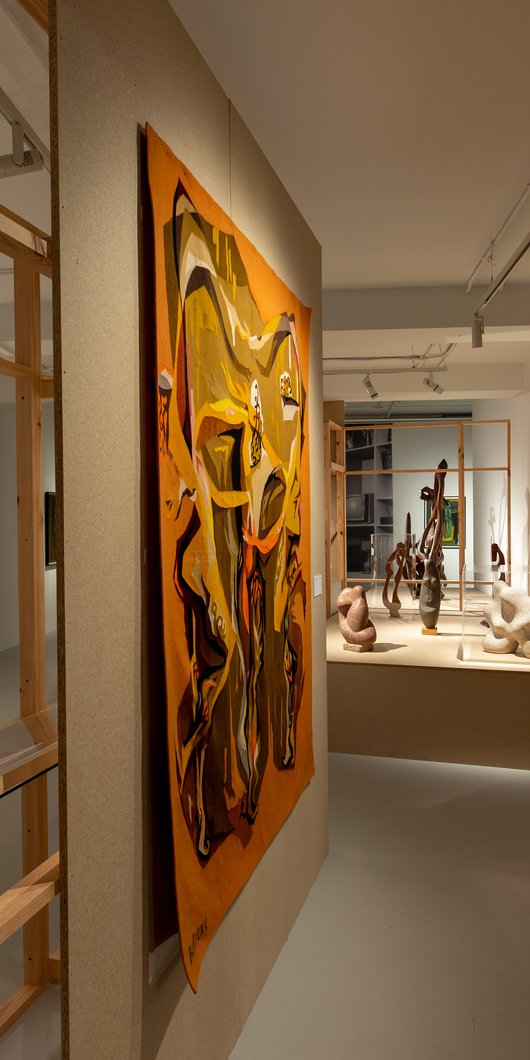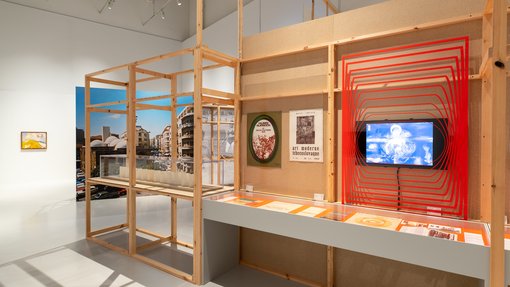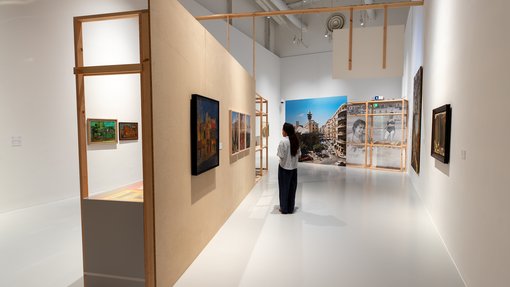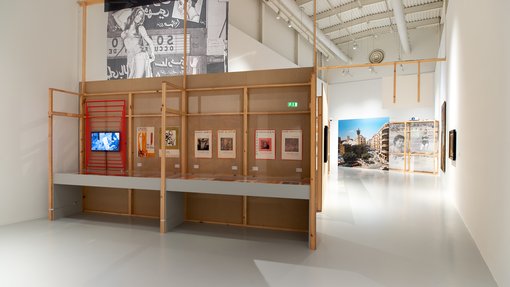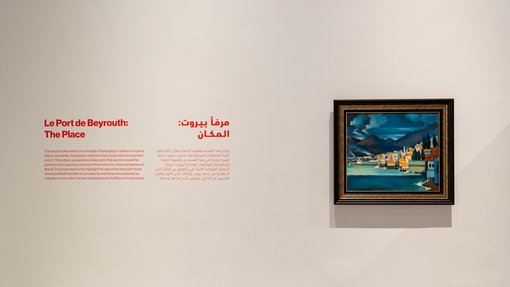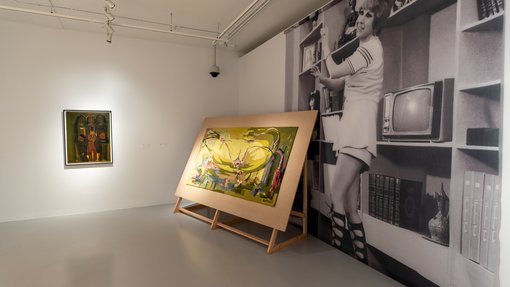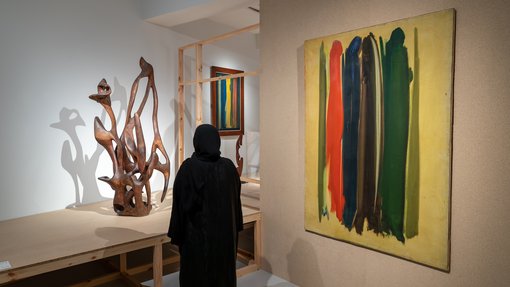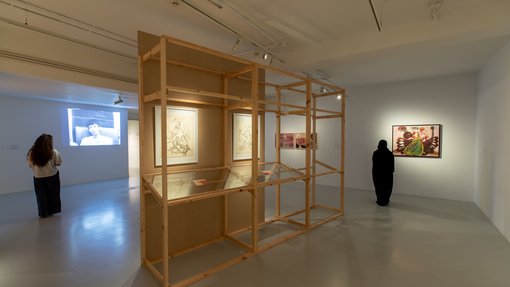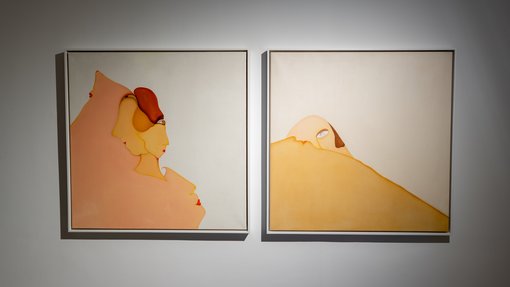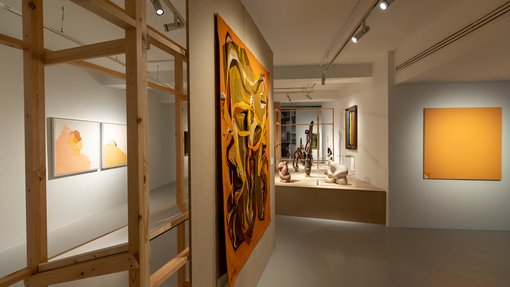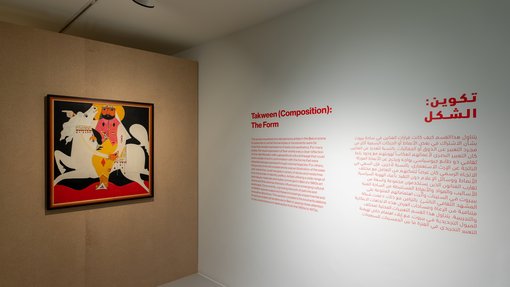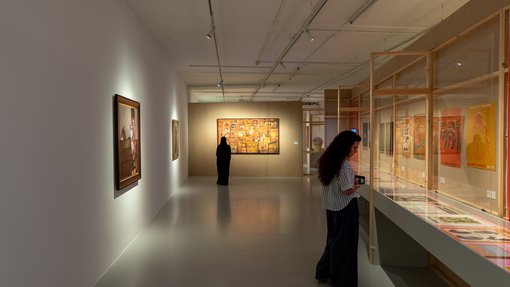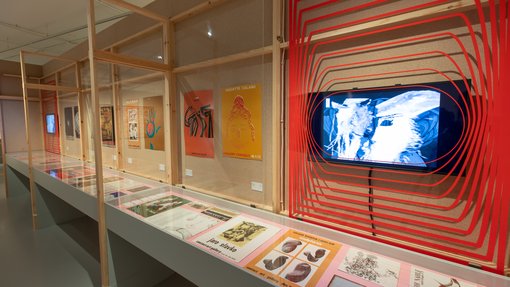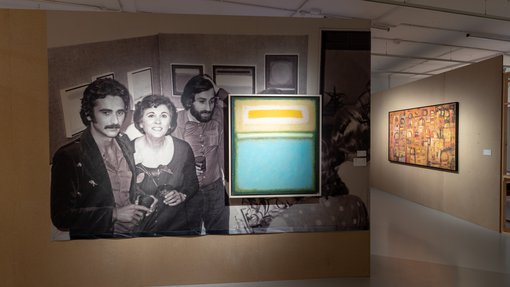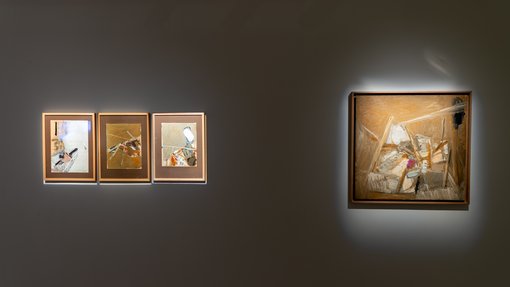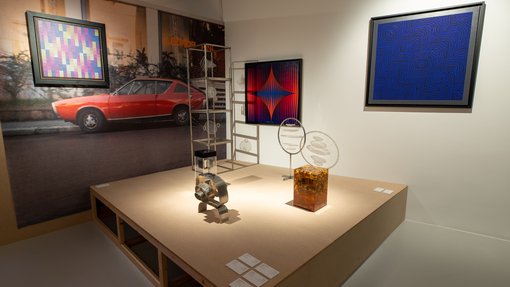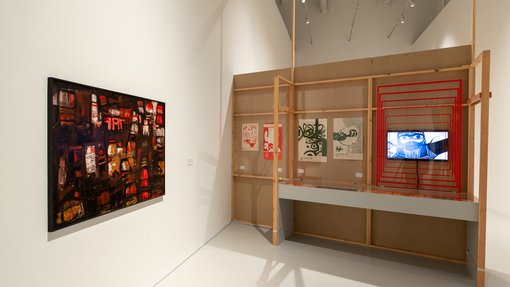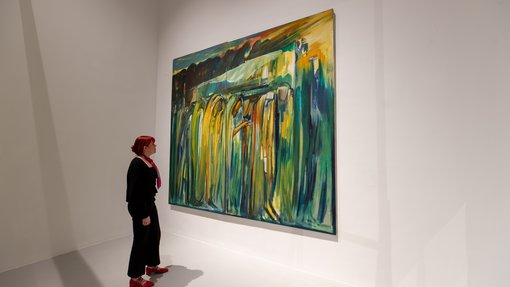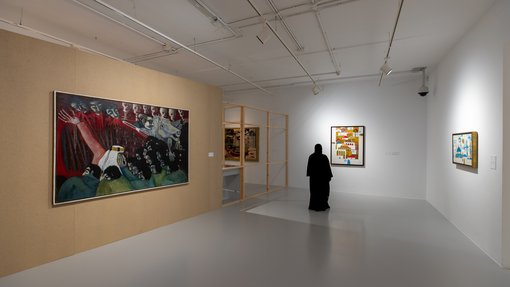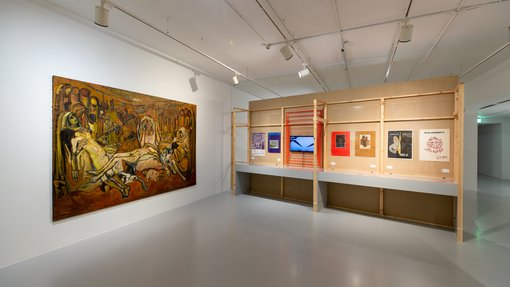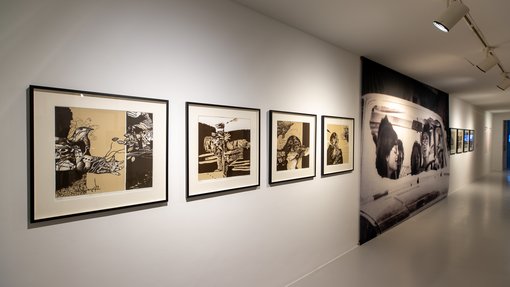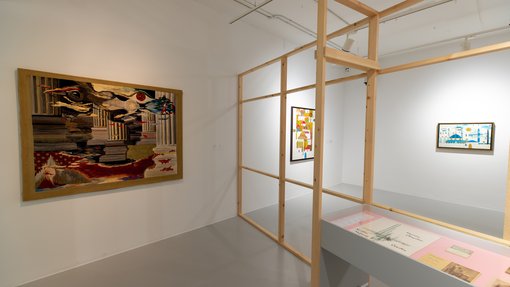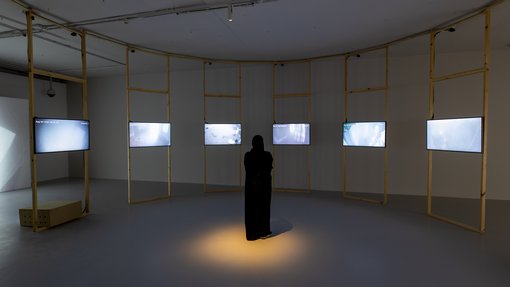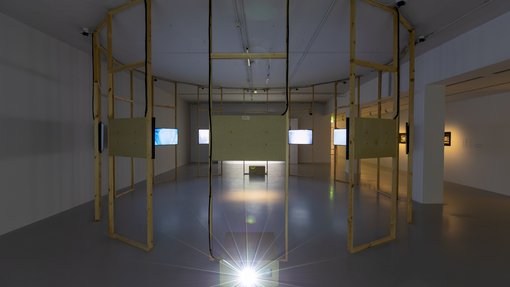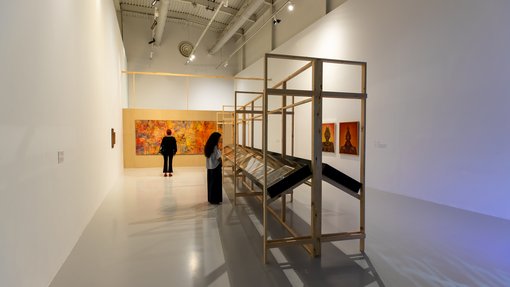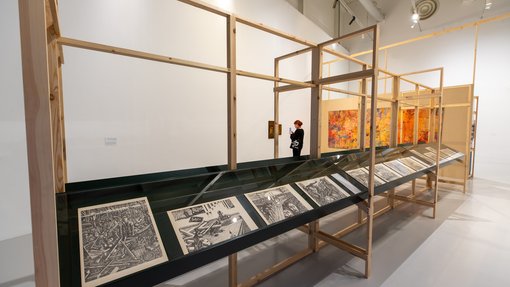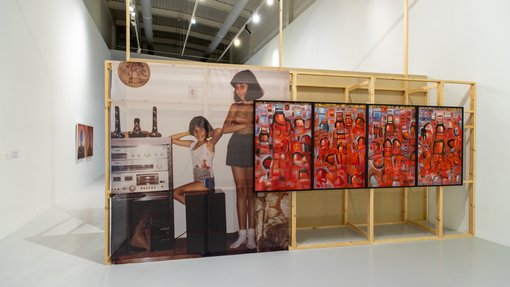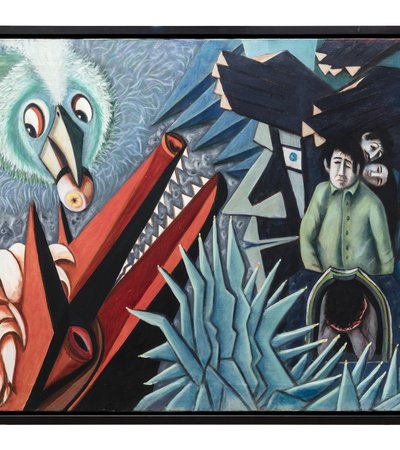Blood of the Phoenix: The War
This final section of the exhibition reveals how the Lebanese Civil War (1975–1990) took its toll on the Beirut art scene. Galleries and independent art spaces were shuttered, and artists migrated to Europe, the United States and the Arab Gulf states. Some politically active artists who remained in Beirut joined the short-lived Lebanese National Movement (LNM) – a coalition of various left-leaning political parties and independent groups who fought the Christian nationalist militias and sought to reform the Lebanese state. Artists also created posters for the sectarian parties they supported.
By the late 1970s, it became obvious that no liberationist path of resistance remained. The escalating violence led to a mass exodus of Muslims and Christians, who fled to areas under the control of their own sects. As a result, the two Beiruts of the civil war – one a predominantly Muslim East, the other a Christian West – were formed. Like all other aspects of Lebanese society, this development had an impact on the artist community as well. With a sniper-surveilled demarcation line of roadblocks and labyrinthine barricades segregating the two sides of the city, most of the galleries and cultural spaces that had catered to the city’s intellectual and artistic communities for so long faced imminent closure or drastically scaled back their programmes due to the inability of both artists and the public to navigate their city freely. Works by Nicolas Moufarrege, Simone Baltaxe Martayan, Aref El Rayess, and Jamil Molaeb highlight the enduring impact of the war on cultural production in Beirut.
